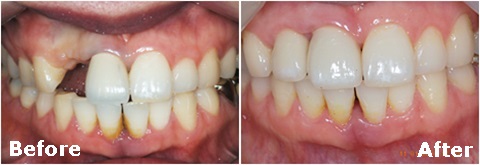
"Firm integration of implants to the bone determines the success of dental implant." Once a natural tooth is lost, the quantity as well as the quality of alveolar bone starts to deteriorate. Thus, most dental implant cases require a bone grafting in order to firmly support the implant. Accurately analyzing the structure of alveolar bone and identifying the cause of tooth loss is essential for bone grafting procedure. Autologous, allogeneic, heterogeneous and synthetic bones are common material used for grafting. When a patient lacks bone mass and osseous tissue, grafting can be done using autologous or allogeneic bone. Bone grafting is done when there isn’t a enough bone mass available to place an implant. Dental Implants on a poor bone mass will increase the chance of nerve damage or antral perforation as well as the loss of dental implants. Depending on the condition of alveolar bone, implants can be placed immediately, or 2~3 months after the bone grafting.
The PRF, Platelet –Rich Fibrin, is a substance extracted from autologous blood by the centrifugal force without any biochemical additives. PRF contains Platelets, hemostatic factors, and proteins & growth factors that help regenerate cells, thus, it accelerates regenerative rate, minimizes loss of blood, and increases success rate of surgical procedures. PRF accelerates the formation of bonding structure between jaw bone and an the implant. In addition, recovery rate with PRF procedure after implant procedure is twice faster than that without PRF procedure.